- Introduction
- The Timeless Appeal of Vintage Record Players
- The Evolution of the Record Player: From Phonograph to Modern Turntables
- Vintage vs. Modern Record Players: A Comparative Analysis
- Caring for Your Vintage Record Player: Maintenance, Repair, and Storage
- The Vinyl Record Player Experience: Rediscovering the Art of Listening
- Conclusion: The Unfading Charm of Vintage Record Players
Introduction
In an age where digital convenience reigns supreme, the resurgence of vinyl and vintage record players strikes a curious chord. Why, amidst the seamless streams of Spotify and Apple Music, do we find ourselves drawn back to the crackle and pop of a needle on vinyl? The answer lies not in the superiority of sound alone but in the experience—a tactile ritual that digital formats cannot replicate. Vinyl offers a warmth and authenticity that resonates with the soul, a tangible connection to music that many yearn for in our increasingly virtual lives. This revival speaks to a collective desire for authenticity and a deeper, more personal engagement with the music we love. Let us explore this vinyl renaissance, understanding why, even in the digital age, the allure of vintage record players continues to spin our world.
The Timeless Appeal of Vintage Record Players
The Aesthetic Charm of Vintage Record Player Designs
There’s something undeniably captivating about the design of a vintage record player. From the polished wood finishes to the intricate dials and knobs, each piece tells a story of craftsmanship and style. Modern devices often lack this level of detail. The aesthetic appeal extends beyond mere nostalgia. It’s about valuing a time when attention to detail and physical beauty is as crucial as functionality. Imagine the warm, wooden console of a 1950s record player. Its sleek lines and tactile surfaces invite you to engage with music in a way that a digital screen never could.
The Tactile Experience: Engaging with Music on a Physical Level
Using a vintage record player is an experience that engages all the senses. There’s a particular joy in the ritual: flipping through your collection to find the perfect album, carefully sliding the vinyl out of its sleeve, and gently placing the needle on the record. The anticipation builds as the turntable spins, leading to the rich, warm sound that fills the room. This tactile interaction creates a connection to the music that’s profoundly different from clicking “play” on a streaming service. It’s a hands-on experience that makes listening an active, rather than passive, activity.
The Community and Culture of Vinyl Collecting
Vinyl collecting is more than just a hobby; it’s a gateway into a vibrant community of enthusiasts. It immerses collectors in a rich culture of music appreciation. Record stores, swap meets, and online forums buzz with collectors. They are eager to share their latest finds, trade stories, and offer advice. This community aspect enriches the vinyl experience, connecting people across generations. It fosters a shared love of music. Whether hunting for a rare 1960s pressing or starting your collection with contemporary releases, you join a global network. This network of vinyl lovers values the artistry and history behind each record.
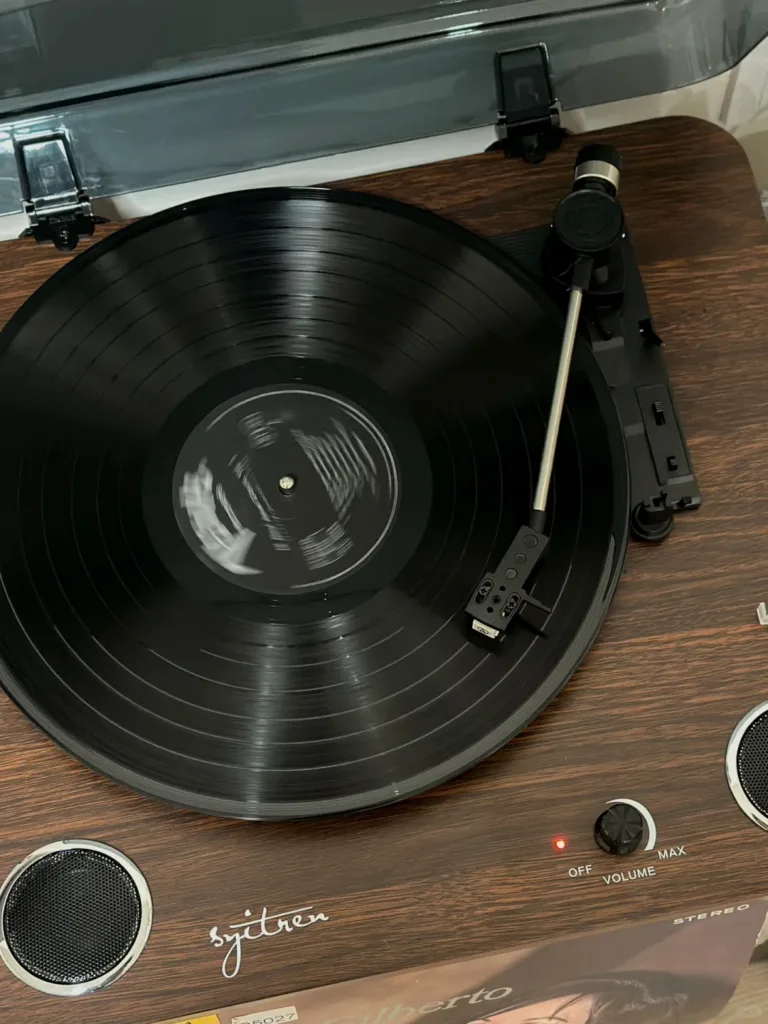
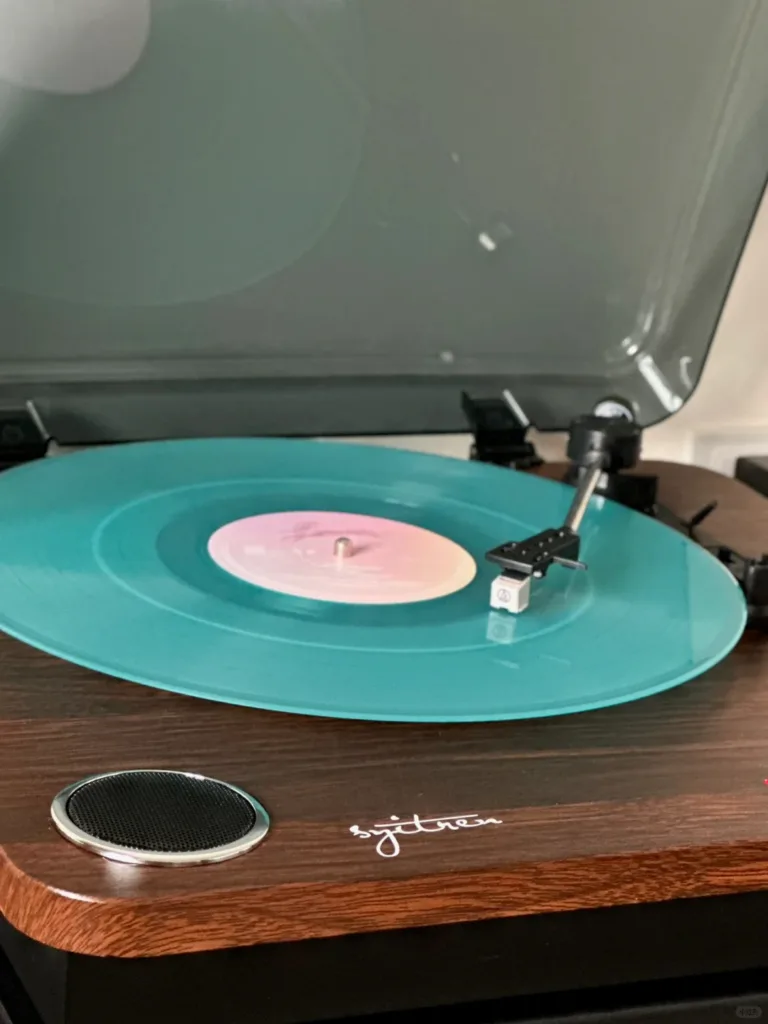
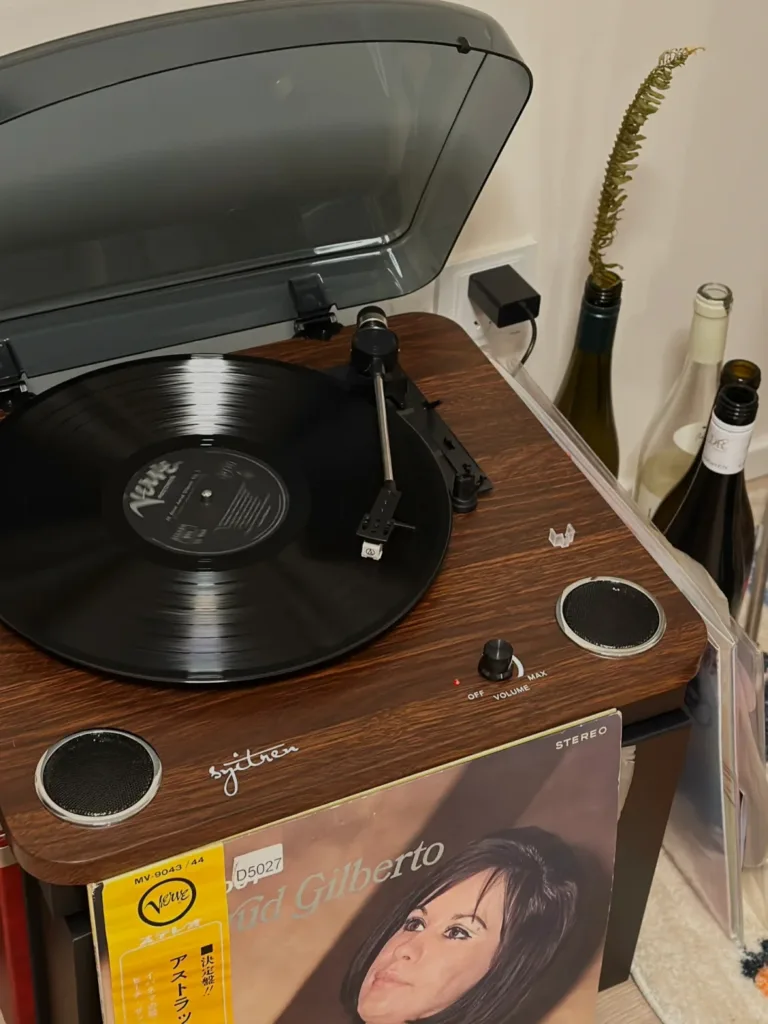
Personal Reflections
Every time I drop the needle on a record, I’m reminded of why vintage record players hold such a special place in my heart. It’s not just about the music; it’s about the experience and the connection. The act of playing a record is a deliberate pause in my day, a moment to truly listen and appreciate the artistry that went into each album. The warm sound, the physical interaction, and the beautiful design of the turntable itself all contribute to a listening experience that’s deeply personal and incredibly rewarding.
The Evolution of the Record Player: From Phonograph to Modern Turntables
The Dawn of Sound Recording: Edison and the Phonograph
The journey of the vintage record player began in the late 19th century with Thomas Edison’s invention of the phonograph in 1877. This groundbreaking device was the first to record and reproduce sound. It used a needle to etch sound waves onto a tinfoil-wrapped cylinder. Edison’s phonograph was a marvel of its time. It introduced the world to the possibility of capturing and replaying sound, a concept that was nothing short of magical.
Berliner’s Breakthrough: The Gramophone
While Edison’s phonograph laid the groundwork, it was Emile Berliner who took the next significant leap with the invention of the gramophone in the late 1880s. Berliner’s device used flat discs instead of cylinders, a change that would define the future of recorded music. The gramophone discs were easier to produce, store, and distribute, making music more accessible to the masses. Berliner’s innovation marked the beginning of the record industry as we know it today.
The Transition to Electronic Components
The evolution of the record player didn’t stop with mechanical innovations. The 20th century saw a transition from purely mechanical devices to electronic components, significantly improving sound quality and convenience. The introduction of electrical recording in the 1920s allowed for clearer, more vibrant recordings. Later, the development of stereo sound in the 1950s and the move towards high-fidelity systems in the 1960s and 70s further enhanced the listening experience, bringing us closer to the music than ever before.
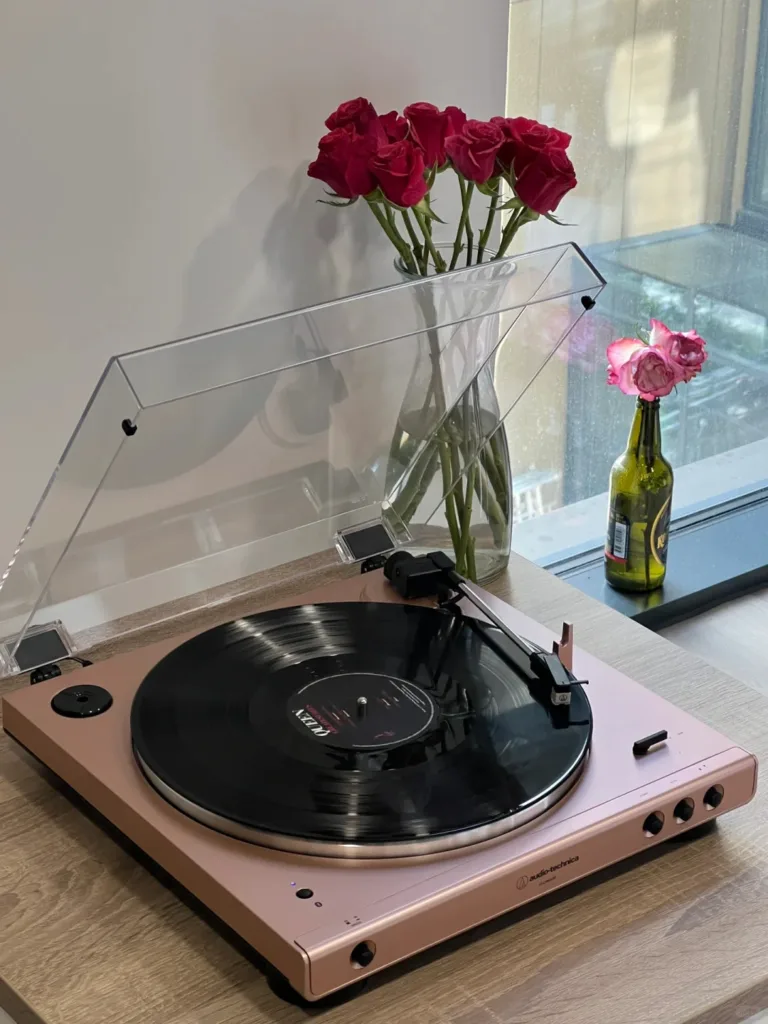
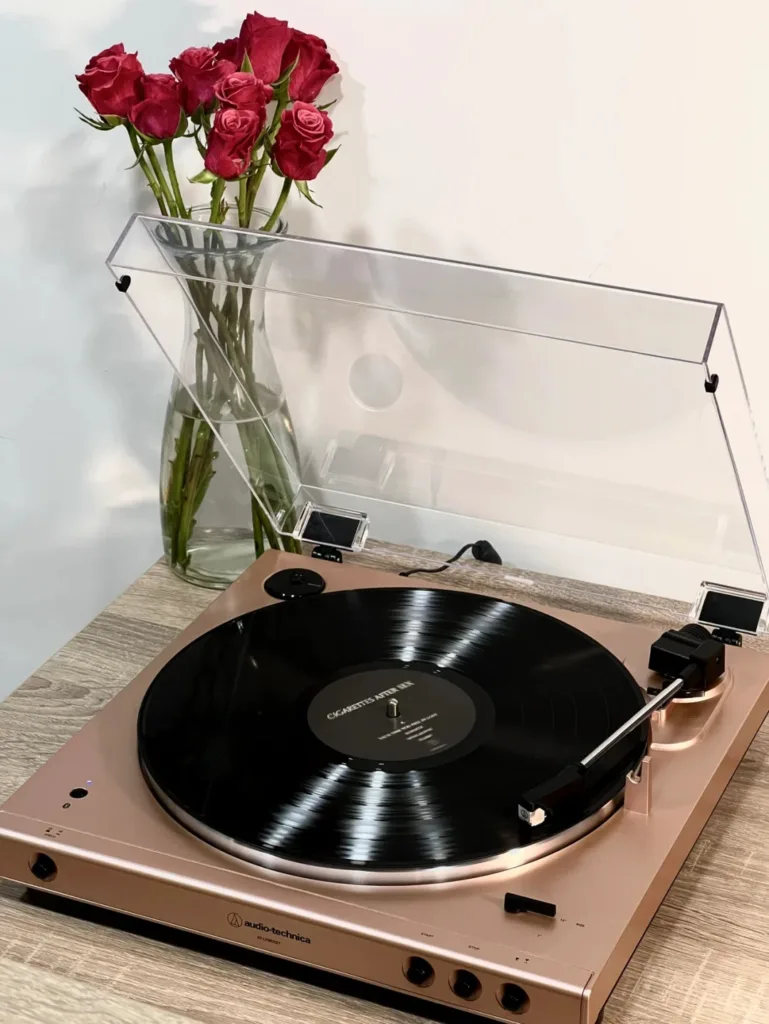
Key Innovations and Inventors:
- Thomas Edison: Invented the phonograph, introducing the concept of sound recording and playback.
- Emile Berliner: Revolutionized the industry with the gramophone, making recorded music widely accessible.
- Electrical Recording: Transitioned from mechanical to electronic, improving sound quality.
- Stereo Sound and High-Fidelity: Innovations that provided a richer, more immersive listening experience.
Vintage vs. Modern Record Players: A Comparative Analysis
Sound Quality: The Warmth of Vintage vs. The Clarity of Modern
The sound quality debate between vintage and modern record players often centers on two distinct characteristics:
Vintage Record Players:
- Warmth and Richness: Known for producing a warm, enveloping sound that many argue is closer to “live” music.
- Analog Nuances: The analog nature of vintage players adds a unique character to the music, including subtle noises that digital formats lack.
Modern Record Players:
- Clarity and Precision: Benefit from technological advancements, offering a cleaner sound with more precise detail.
- Technological Enhancements: Features like direct drive systems and advanced cartridges extract every nuance from vinyl records.
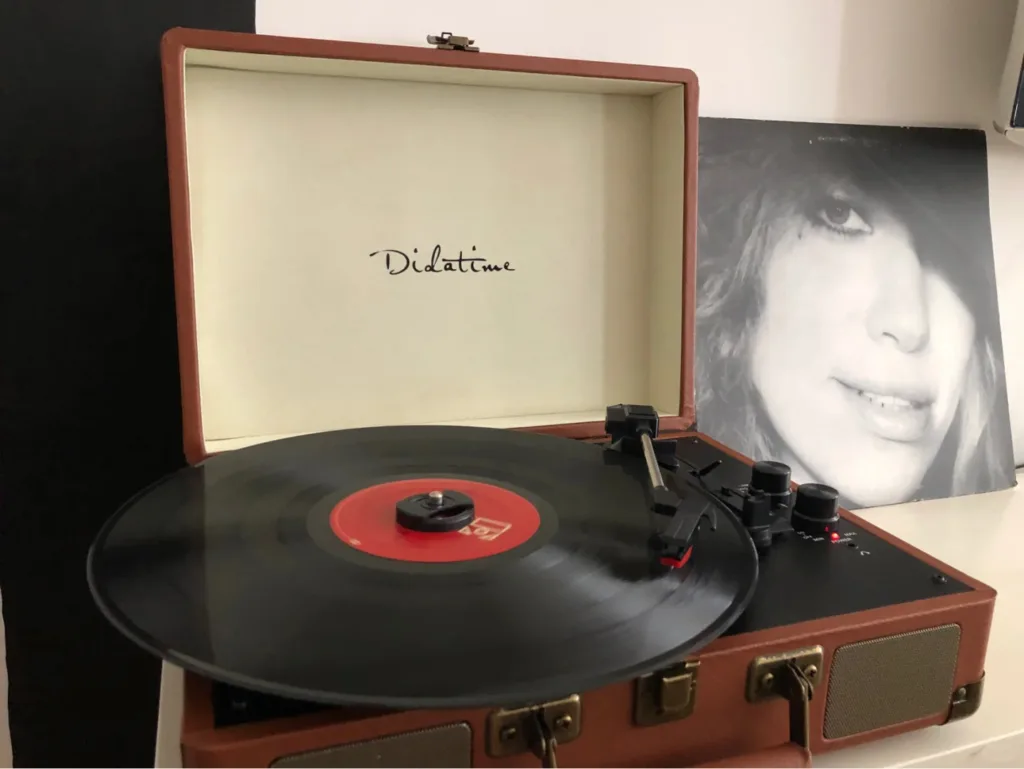
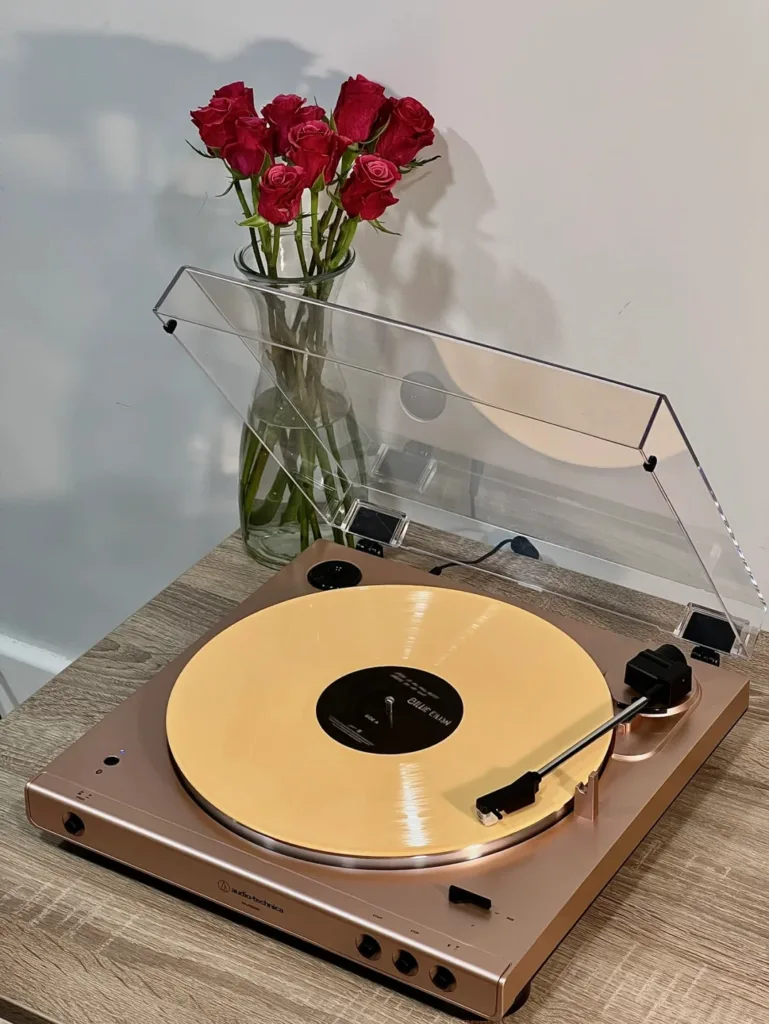
Built-in Features: Modern Convenience vs. Vintage Simplicity
When comparing the features of vintage and modern record players, the contrast is stark:
Modern Record Players:
- Built-in Preamps: Simplify the setup by connecting directly to speakers without needing a separate amplifier.
- Digital Integration: USB ports and Bluetooth connectivity allow for easy digitization of vinyl records and wireless listening.
- Automatic Systems: Features like auto-start, auto-stop, and auto-return add convenience but can detract from the hands-on experience.
Vintage Record Players:
- Simplicity in Design: Focus on the essentials of vinyl playback without the distraction of digital features.
- Craftsmanship: Often features solid construction with heavy platters and wooden cabinets, contributing to both aesthetics and sound quality.
- Manual Operation: Encourages a more interactive listening experience, fostering a deeper connection with the music.
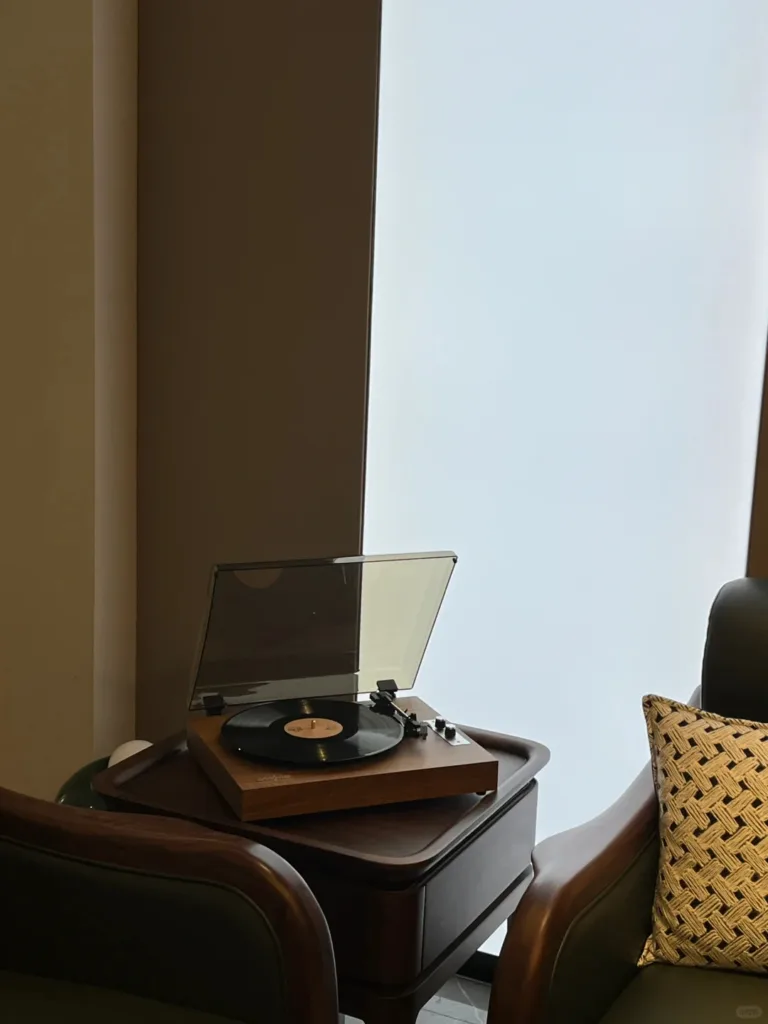
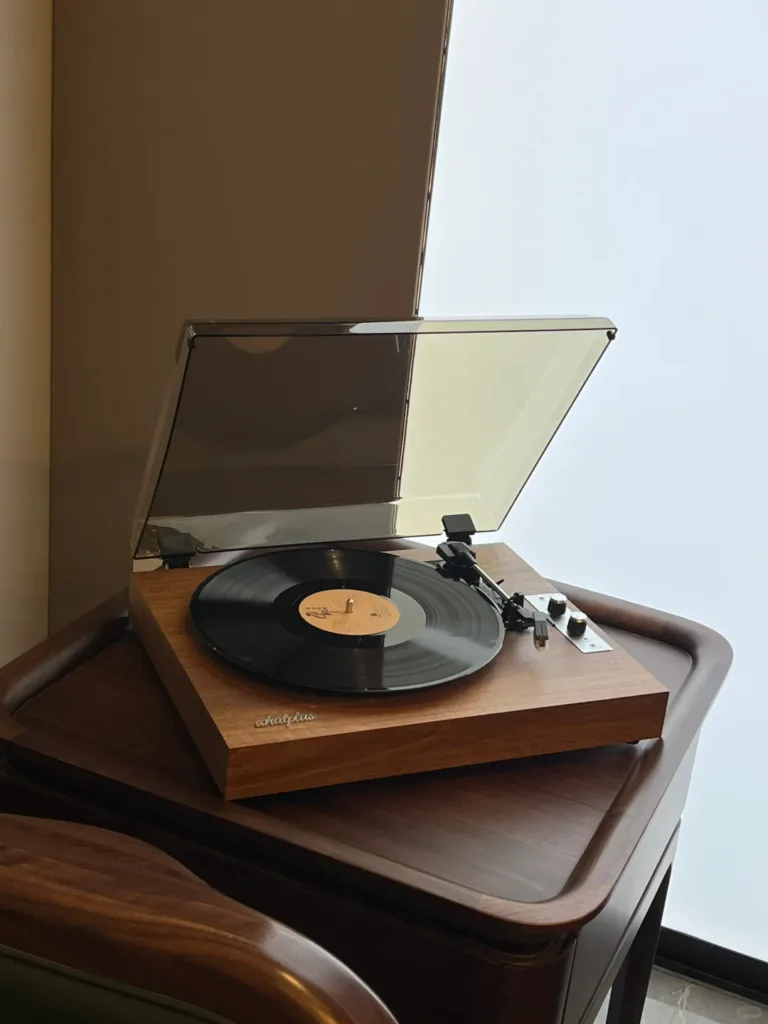
The Value of Vintage Record Players: Collectibles and Investments
Vintage record players hold a special place in the hearts of collectors and enthusiasts, not just for their aesthetic and auditory appeal but also for their value as collectibles and investments. Certain models, especially those from iconic brands or limited production runs, have become highly sought after. The value of a vintage record player can be influenced by several factors, including its condition, rarity, brand, and historical significance. For many, collecting vintage record players is a passion that combines the love of music with the thrill of the hunt, and the potential for financial appreciation is a welcome bonus.
Caring for Your Vintage Record Player: Maintenance, Repair, and Storage
Owning a vintage record player is not just about enjoying its warm sound and aesthetic appeal; it’s also about preserving its functionality and beauty through proper care and maintenance. Here’s how to ensure your vintage treasure continues to enrich your life with music for years to come.
Maintenance and Repair Tips for Vintage Record Players
Keeping your vintage record player in top condition requires regular maintenance and, occasionally, some repair work. Here are some essential tips:
- Regular Cleaning: Dust and dirt can significantly affect your player’s performance. Gently clean the needle (stylus) with a soft brush after each use. Use a dry, soft cloth to wipe down the turntable and other surfaces.
- Lubrication: Older mechanical parts may need lubrication to operate smoothly. Consult the manufacturer’s guide or a professional to understand the specific needs of your model.
- Belt Inspection: For belt-driven turntables, check the belt regularly for signs of wear or degradation. Replacing an old or stretched belt can improve performance.
- Needle Replacement: The stylus should be replaced every 1,000 to 2,500 hours of play to ensure the best sound quality and to protect your records from damage.
Finding Parts and Professional Help
Sometimes, DIY maintenance isn’t enough, or you might need replacement parts. Here’s how to find the help you need:
- Online Communities and Forums: Sites like Vinyl Engine and Audiokarma are treasure troves of information, offering advice, and sometimes even parts, from fellow enthusiasts.
- Specialized Repair Shops: Look for shops that specialize in vintage audio equipment. They can often source rare parts and have the expertise to handle complex repairs.
- Manufacturer Resources: Some manufacturers or their successors might still offer support or parts for vintage models. It’s always worth checking their official websites.
The Importance of Proper Storage and Handling of Vinyl Records
To get the best out of your vintage record player, you also need to care for your vinyl records:
- Storage: Store records vertically to prevent warping. Ensure they are kept in a cool, dry place away from direct sunlight.
- Handling: Always hold records by the edges or the labeled area to avoid getting oils from your skin on the grooves.
- Cleaning: Use a record brush to remove dust before each play. For deeper cleans, consider a record cleaning solution and a soft, lint-free cloth.
The Vinyl Record Player Experience: Rediscovering the Art of Listening
In today’s fast-paced digital world, the resurgence of vinyl and vintage record players stands as a testament to the timeless appeal of physical media. This revival is not just about music; it’s a cultural movement that celebrates the ritual of listening, the beauty of tangible artifacts, and the communal joy of sharing stories and experiences.
The Ritual of Playing a Record
The act of playing a vinyl record is a ritual that engages the senses and transforms the listening experience:
- Selection: The process begins with choosing a record, an act that often involves browsing through a collection and reflecting on what music suits the moment.
- Preparation: Next comes the careful removal of the record from its sleeve, a moment filled with anticipation.
- Engagement: Placing the record on the turntable, positioning the needle, and watching the vinyl spin bring a physical interaction that digital formats lack.
- Listening: Finally, the music fills the room, inviting the listener to sit back, listen actively, and immerse themselves in the soundscapes created by the artists.
Personal Stories from the Vinyl
In the world of vinyl, every record player spins a tale not just of music, but of personal journeys and discoveries. Let’s delve into the lives of individuals for whom vinyl is not just a format, but a way of life.
- Sarah’s Saturday Mornings: For Sarah, a graphic designer with a penchant for the classics, her vintage record player is the centerpiece of her apartment. Saturday mornings are sacred, reserved for the ritual of coffee and records. She sifts through her collection, each album a chapter in her life’s story, and selects a soundtrack for her day. The act of dropping the needle on a record, she says, is like pressing pause on the week’s chaos, allowing her to start her weekend with intention and grace.
- Mike’s Garage Finds: Mike, a retired school teacher, spends his weekends scouring garage sales and flea markets for hidden vinyl gems. His collection, amassed over decades, is a testament to his love for the thrill of the hunt. Each record he finds, from obscure jazz albums to classic rock staples, carries a story of discovery. His garage, transformed into a listening den, is where friends gather to hear tales of his latest finds and the music that shaped their youth.
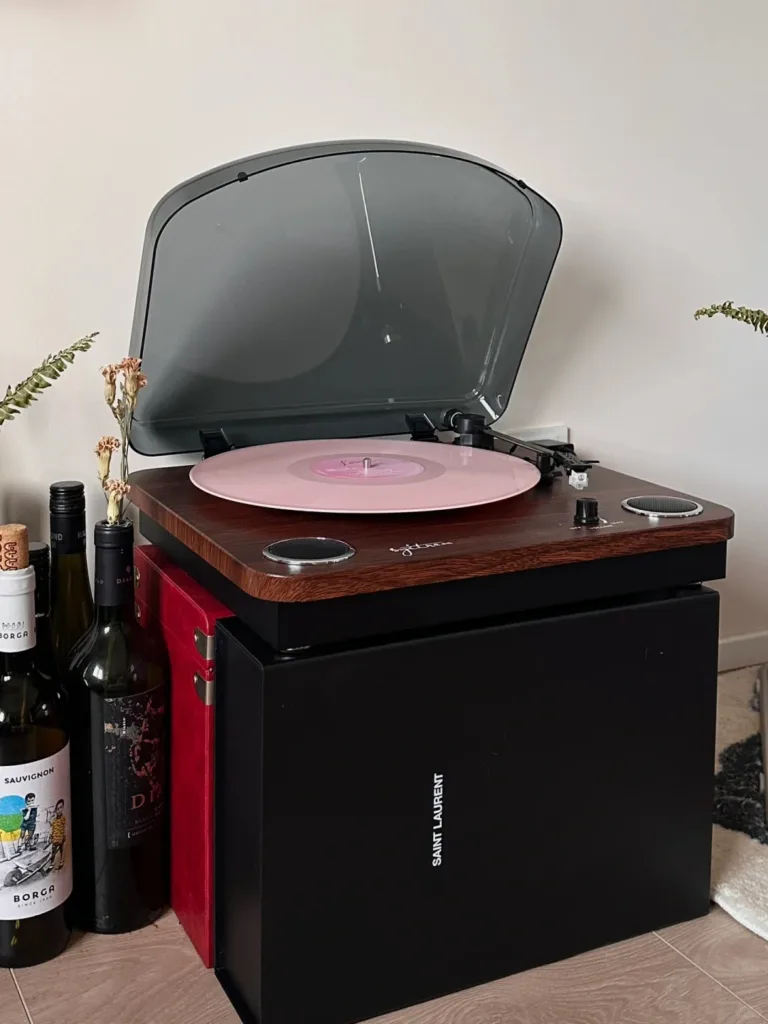
Conclusion: The Unfading Charm of Vintage Record Players
The allure of vintage record players lies not just in their aesthetic or nostalgic value but in the authentic, immersive experience they offer. These timeless pieces remind us that music is not only to be heard but to be felt and interacted with. In an era dominated by digital convenience, the act of playing a vinyl record becomes a deliberate pause, a ritual that enriches our connection to music.
I invite you to step into the world of vinyl and vintage record players. Whether it’s the warmth of the sound, the beauty of the machinery, or the ritual of listening they revive, there’s something for everyone. Start with a single record, feel the music, and let the journey unfold. The community of vinyl enthusiasts is vast and welcoming, ready to share their knowledge and passion. Let’s keep the legacy of vinyl alive, one record at a time.

